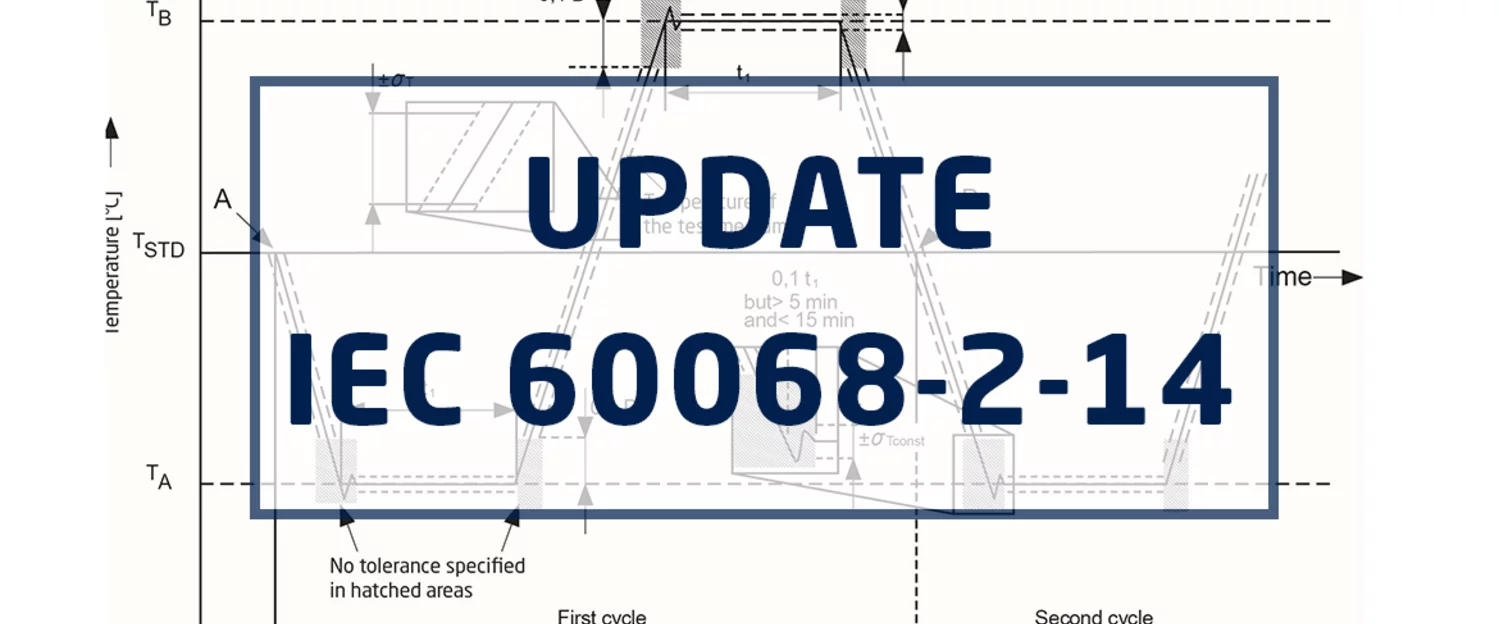IEC 60068-2-14: The test standard for thermal cycling of electrotechnical equipment has been updated with the cooperation of Weiss Technik. The focus is primarily on the interaction between the test specimen and the test parameters.
A car is started in the morning after a cold night in the car park - the engine and electronics start up and warm up quickly. This is just one of many everyday situations in which electrical products are sometimes exposed to extreme and abrupt cold and heat. Temperature-induced load tests offer insights into how the units respond to these conditions. They also provide insights into durability, vulnerability and damage mechanisms.
Laboratories and manufacturers that carry out tests on temperature changes are guided by the IEC 60068-2-14 standard, among others. The test criteria are currently being revised due to improvements in test technology, particularly in the measurement and analysis of the test specimen. Christian Haack, Head of Development at Weiss Technik, played a part in this. As Chairman of the Technical Committee TC 104 of the IEC, he also assumed responsibility for the revision of the standard. "For this purpose, I have mainly collected user knowledge and practical experience from industry, trade associations and various international committees in order to incorporate it into the update of the standard," says Haack.
Hot and cold: Stronger focus on the test specimen
The amendment to the standard, which does not change the basic test method, places emphasis on the specimen. This is because specimens heat up or cool down differently depending on their material, weight and processing, and each specimen reacts differently to the test conditions. Any wear or damage will also be uneven. Additional example curves and tolerances for temperature levels have been added to the standard to provide guidance. Among other things, this improves the comparability of tests.
Sensors can be attached to the test specimen to measure the reactions to the temperature changes. Advantage: The test specimen can be measured in many places and its behaviour can be recorded live. Cameras installed in the test chamber also provide images for visual evaluation.
Three test procedures: Including shock tests
The test variants are subdivided into the designations Na, Nb and Nc. Na refers to a temperature jump test that involves massive differences in heat or cold: For example, an abrupt drop from 100 degrees Celsius to minus 50 degrees Celsius and back again - both at maximum cooling and heating power. The thermal shock test is carried out using flap shock devices which cool or heat the specimen via air flaps. Alternatively, it can be performed using car models in which the test item is shuttled between heating and cooling chambers, similar to a frozen pizza being pushed from the fridge directly into a hot oven.
Nb is a ramp test, which involves a linearly controlled change in temperature - cooling and heating in gradual steps. The gradual change in temperature allows the reaction of the sample to be observed during the defined post-tempering. For this reason, this test method is also considered the experimental precursor to the Na temperature jump test.
Finally, Nc represents a test method in which liquid induces the temperature changes instead of air. The test is carried out using the two-bath method, which considerably improves heat and cold transfer due to the high conductivity of liquids, even for abrupt temperature changes.
Quality and experience: standard reflects testing practice
The guideline is primarily designed for the qualification, validation and development of electrotechnical products. It is used for quality assurance and to track causes and mechanisms of damage, ultimately leading to the approval of units. Even mechanical products and components can be tested using this test method.
As the test methodology has not changed, laboratories and manufacturers can continue to use their existing test equipment to a large extent, depending on the type of test. Weiss Technik devices such as the ShockEvent, TempEvent, ClimeEvent and LabEvent, some of which can reach temperatures as low as minus 70 degrees Celsius, are ideal for these tests.
With the direct involvement of Weiss Technik, the decades of experience of the Reiskirchen-based company in the field of test chambers and environmental simulation became an essential component in the revision of the standard.
|
In order to gather further practical knowledge for future updates of the standard, Christian Haack is asking for input from users. There are two options for submitting assessments and suggestions: At national level through the German Commission for Electrical Engineering (DKE): https://www.dke.de/de/mitmachen/nehmen-sie-stellung-zu-norm-entwuerfen At international level through the International Electrotechnical Commission (IEC): https://www.iec.ch/dyn/www/f?p=103:29:302577811679667::::FSP_ORG_ID,FSP_LANG_ID:1308,25#3 |

